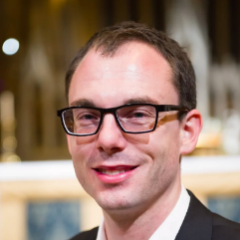If you mention La Scala, you automatically think of Verdi, Puccini, Rossini and Donizetti, the theatre being synonymous with the greatest works in the Italian operatic canon. If asked to list composers whose works were premiered at La Scala, how many people would mention Umberto Giordano, whose opera La cena delle beffe was first performed there in 1924 under the baton of Arturo Toscanini? Despite its obscurity today, it enjoyed much popularity at the time. In fact, at its première the cast received 24 curtain calls and by 1930, the opera had been seen in more than 40 cities around the world, including two seasons at The Met. Since then, however, the opera has barely been heard and no studio recordings have ever been made; only a couple of live recordings exist.
Therefore, La Scala's revival, under the direction of Carlo Rizzi, was highly anticipated. The opera is an adaptation of an Italian libretto by Sam Benelli, taken from his 1909 play of the same name. Despite the fact that its title suggests something of a comic opera “The Jesters' Supper”, the plot is far from it, and has at its heart the weighty themes of love, revenge and tragedy, which occurs through misadventure and mistaken identity. Set in Florence, it tells the story of two men, Giannetto Malaspina (a tenor) and Neri Chiaramantesi (a bass) who both compete for the love of Ginevra. The two suitors play a series of practical jokes on each other, the principal one being when Giannetto convinces his companions that Neri is mad, thus allowing him access to Ginevra. However, the final, most tragic 'joke' concludes with Neri killing both Ginevra and his own brother Gabriello, in a case of mistaken identity.
The music is almost cinematic, often commentating on the action as if accompanying a silent film. Giordano uses dissonance in a sometimes jarring way in the more dramatic scenes. Despite this, there is much tenderness and lyricism to be found in the score. Particularly effective are the two love duets to be found in Acts II and III respectively. In Act II, in another case of mistaken identity, Genevra discovers she has spent the night with Giannetto and the two subsequently sing of their love for each other. In Act Three, Lisabetta, a former lover of Neri, rekindles her love for him and takes guardianship of him, thus releasing him from his captivity through suspected insanity. This latter scene contained perhaps the best soprano singing of the evening. Jessica Nuccio, playing Lisabetta, sang with a beautifully pure tone, but also with much variety in mood. However, the star of the opera vocally, was Marco Berti as Giannetto. This is a highly demanding tenor role, consistently high and filled with passion. Berti showed great stamina, every high note ringing out with ease, but also with great intensity. Kristin Lewis made a fine job of playing Ginevra. She brought out well the subtleties of her character and vocally produced a good performance, particularly when singing together with Giannetto, as if she was inspired by him to imbue her role with even more passion and perhaps to take more risks. Nicola Alaimo was effective as Neri, and impressed particularly in the top end of his register. However, he lacked the overall resonance which I was looking for, which would have made his character more threatening. The orchestra of La Scala was on fine form too, performing Giordano's colourful score, in which every section has its chance to shine.
The set for this production was imaginitive, but respectful to the libretto. Full of colour and detail, it provided the perfect backdrop for the unfolding action. Set in New York of the 1920s, it essentially consisted of three levels of a house; the top level containing two rooms – Ginevra's bedroom and an adjoining waiting room; the middle level was a bar/restaurant which provided an excellent setting for the conviviality of Act I; the bottom level was a cellar in which Neri was tied up during Act III. The most notable difference with its New York setting, was the use of guns for the murders in Act IV; in the original the victims are stabbed. Somehow, the surprise of a gun shot echoing through the theatre made the deaths all the more tragic through their suddenness and the quickness at which the lives of the victims were ended. They also seemed to tie in with the cinematographic nature of Giordano’s music.
It is interesting to speculate why there have been so few performances of this work, which after all is highly accessible. Promoters may worry that they it might not appeal to the public, although judging by the near capacity audience at La Scala, that is not the case, at least not in Milan. Happily, it seems that the public here still has an appetite for rediscovering little known works.


